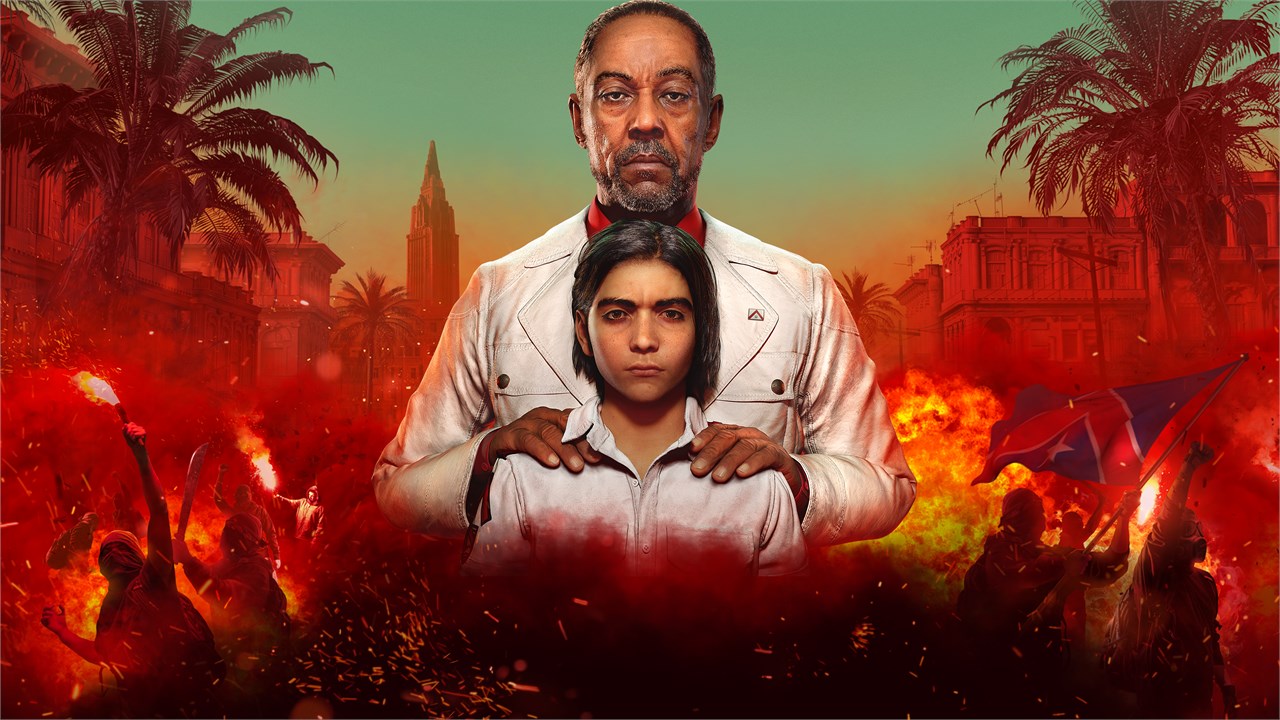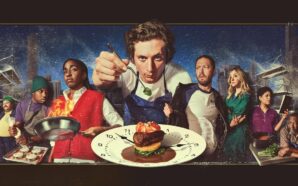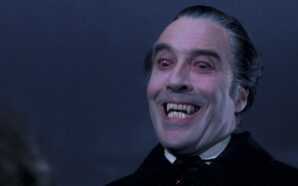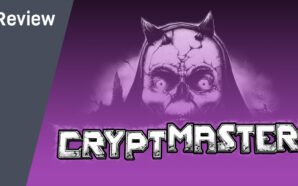While the early instalments can’t be ignored, it was Far Cry 3 which established the franchise as we know it today. The formula has remained largely unchanged ever since, and with the recent announcement of Far Cry 6, I felt the urge to revisit that important earlier sequel which remains the franchise’s best. Takedowns, outposts and expansive open worlds are now part of Far Cry’s DNA, and so too is the charismatic, psychotic villain. This was almost accidental, with Michael Mando’s performance as Vaas being so good that Ubisoft decided to lead with the character, placing the secondary antagonist front and centre when marketing the game. Replaying Far Cry 3, it’s easy to see why. It’s a delightfully unhinged performance, very quotable, and his presence is sorely missing from the second half of the game after he’s killed off – truly one of gaming’s greatest mistakes. Post-Vaas, the games have continued to focus primarily on the villains – from Pagan Min, the Father, and most recently Giancarlo Esposito as Antón Castillo – but in doing so the franchise has lost the other aspect of what made Far Cry 3 such as success: a compelling protagonist.
 Far Cry 3 made the brilliant choice to break the mould of first-person shooters of the era. The game isn’t about militaristic Übermensch with high tech weapons, but rather places an enormous burden on a regular guy and watches him crack under the pressure. Jason Brody and his friends are trust fund travellers – rich and entitled thrill seekers, stoners and wannabe actors. Jason sets out to rescue his friends from pirate slavers and, as he’s forced to commit more and more violent acts, he transforms. The once timid and fearful Brody becomes desensitized by Rook Island’s constant perils and begins to enjoy killing, growing more distant from his rescued friends and ultimately choosing to stay on the island as a psychopathic warrior. In the wake of momentous games like The Last of Us Part 2, it’s fascinating to play earlier, much simpler, examinations of how violence affects characters in games. While Vaas is the more iconic and instantly engaging character, Far Cry 3 is as successful as it is because of Brody.
Far Cry 3 made the brilliant choice to break the mould of first-person shooters of the era. The game isn’t about militaristic Übermensch with high tech weapons, but rather places an enormous burden on a regular guy and watches him crack under the pressure. Jason Brody and his friends are trust fund travellers – rich and entitled thrill seekers, stoners and wannabe actors. Jason sets out to rescue his friends from pirate slavers and, as he’s forced to commit more and more violent acts, he transforms. The once timid and fearful Brody becomes desensitized by Rook Island’s constant perils and begins to enjoy killing, growing more distant from his rescued friends and ultimately choosing to stay on the island as a psychopathic warrior. In the wake of momentous games like The Last of Us Part 2, it’s fascinating to play earlier, much simpler, examinations of how violence affects characters in games. While Vaas is the more iconic and instantly engaging character, Far Cry 3 is as successful as it is because of Brody.
The much-discussed antagonists of the Far Cry series are offscreen for most of the game and so the protagonist, while a vessel for the player, needs to be an engaging character in their own right. Sure, the missions and gameplay are fun on their own but what really makes everything come together in Far Cry 3 is that gameplay enforces character development. Every pirate slain and cassowary butchered not only offers moment-to-moment entertainment but pushes Brody further along his path of darkness. Every single action in the game continues his journey and you can feel it. Of course, the game quotes Alice’s Adventures in Wonderland to comment on Brody’s quest “down the rabbit hole”, which is now frustratingly generic. It seems as if every game, film or TV show with a similar plot has to quote the exact same passage from the book, despite the work of Joseph Conrad fitting Far Cry 3 much better.
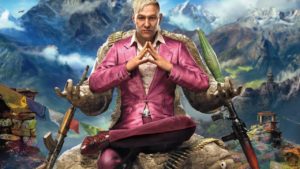 Despite Jason Brody being the core of the franchise’s greatest success, when it came time for the next instalment of the series, it was Vaas who continued to be the biggest inspiration. Far Cry 4 doubled down on the charismatic villains and once again had the game’s big bad, this time the more emotionally reserved but campily flamboyant Pagan Min, grace the game’s cover and all the promotional material. While no Vaas, Min was an enjoyable villain, but whilst Ubisoft were hard at work creating another memorable antagonist and open world, they put much less effort into their protagonist. Ajay Ghale returned to his homeland to place his mother’s ashes and soon gets caught up in the country’s civil war. While there are player choices and alternate outcomes, Ajay and the story just feel dull and surprisingly impersonal. I had forgotten everything about the character and had to read his Far Cry wiki entry just to remember his name. Far Cry 4 was a fun experience but never had the weight or impact of its predecessor.
Despite Jason Brody being the core of the franchise’s greatest success, when it came time for the next instalment of the series, it was Vaas who continued to be the biggest inspiration. Far Cry 4 doubled down on the charismatic villains and once again had the game’s big bad, this time the more emotionally reserved but campily flamboyant Pagan Min, grace the game’s cover and all the promotional material. While no Vaas, Min was an enjoyable villain, but whilst Ubisoft were hard at work creating another memorable antagonist and open world, they put much less effort into their protagonist. Ajay Ghale returned to his homeland to place his mother’s ashes and soon gets caught up in the country’s civil war. While there are player choices and alternate outcomes, Ajay and the story just feel dull and surprisingly impersonal. I had forgotten everything about the character and had to read his Far Cry wiki entry just to remember his name. Far Cry 4 was a fun experience but never had the weight or impact of its predecessor.
Once again, Far Cry 5 put its antagonists first. The Father and his mysterious religious cult that prophesied doomsday made for a most dangerous adversary, and when combined with the US setting and refined gameplay, the game is my second favourite of the series. And yet the lack of a compelling protagonist was even more prevalent. I thought the days of silent protagonists were over and yet Far Cry 5 has you play as a character known only as “the Rookie” – a young cop who never speaks, has no personality, and is customisable. Ubisoft seemingly put player skins and costumes ahead of, you know, little things such as story and character. It’s frustrating, and while you can make the argument for increased ‘player agency’ and the character ultimately being a vessel for the gamer, you can’t tell an effective story this way. It puts all narrative pressure on the villains and side characters but they’re not onscreen most of the time. Whereas every player action in Far Cry 3 was meaningful for Brody, the only impact of clearing out a base or killing an animal in Far Cry 5 is for player progression, not character progression.
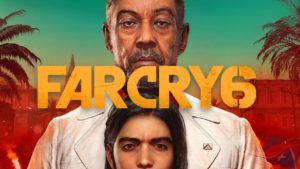 And so, we get to Far Cry 6. It’s been announced that we’ll play as Dani Rojas, a revolutionary in Yara – an isolated island nation based on Cuba. And, in keeping with Far Cry’s current trend, that’s all we know about the protagonist because all the focus has been placed on Giancarlo Esposito’s villainous El Presidente. Granted, the reveal trailer featuring Esposito’s latest baddy is fantastic, and highlights that much of the game’s drama will come from the relationship between him and his son. Hopefully the game features a different kind of villain performance from Esposito, who ever since his phenomenal turn as Gus Fring in Breaking Bad (and Better Call Saul) has been playing slightly different variations of that character in everything. It’s like when Christoph Waltz was being hired just to play worse versions of Hans Landa in everything. I’d also like to see the serious tone of the cinematic trailer continue into the actual game. I don’t need Far Cry 6 to be Far Cry 2-level gritty, but I think the franchise has grown a little too silly over the years. Again, Far Cry 3 should be the touchstone.
And so, we get to Far Cry 6. It’s been announced that we’ll play as Dani Rojas, a revolutionary in Yara – an isolated island nation based on Cuba. And, in keeping with Far Cry’s current trend, that’s all we know about the protagonist because all the focus has been placed on Giancarlo Esposito’s villainous El Presidente. Granted, the reveal trailer featuring Esposito’s latest baddy is fantastic, and highlights that much of the game’s drama will come from the relationship between him and his son. Hopefully the game features a different kind of villain performance from Esposito, who ever since his phenomenal turn as Gus Fring in Breaking Bad (and Better Call Saul) has been playing slightly different variations of that character in everything. It’s like when Christoph Waltz was being hired just to play worse versions of Hans Landa in everything. I’d also like to see the serious tone of the cinematic trailer continue into the actual game. I don’t need Far Cry 6 to be Far Cry 2-level gritty, but I think the franchise has grown a little too silly over the years. Again, Far Cry 3 should be the touchstone.
Replaying the franchise’s masterful third game gave me a greater sense of fear that the series is misunderstanding that earlier game’s success, and that it’ll only continue next year with the release of Far Cry 6. While the antagonists are a vital part of the Far Cry formula, and are being treated as such, the protagonists are more important and yet are being discarded. This isn’t just a Far Cry problem, but rather seems to be a choice by Ubisoft at large. While I very much enjoyed Odyssey, I think the player choices in the recent Assassin’s Creed games have led to much blander storytelling. Ubisoft are even eliminating protagonists entirely in Watchdogs: Legion; a game which allows you to play as anyone in London, but is this conducive to good storytelling? That remains to be seen (or played) but I’m not excited by the idea. These choices by Ubisoft regarding protagonists seem to be motivated by creating more player freedom and just straight up fun, but I think Far Cry can be more than just entertaining action sandbox games. Far Cry 3 proved it. Storytelling and character development aren’t antithetical to some dumb fun when the right protagonist is involved.
Do think more focus should be placed on Far Cry protagonists? Which is your favourite game in the series? Let me know in the comments and be sure to geek out with me about TV, movies and video-games on Twitter @kylebrrtt.




